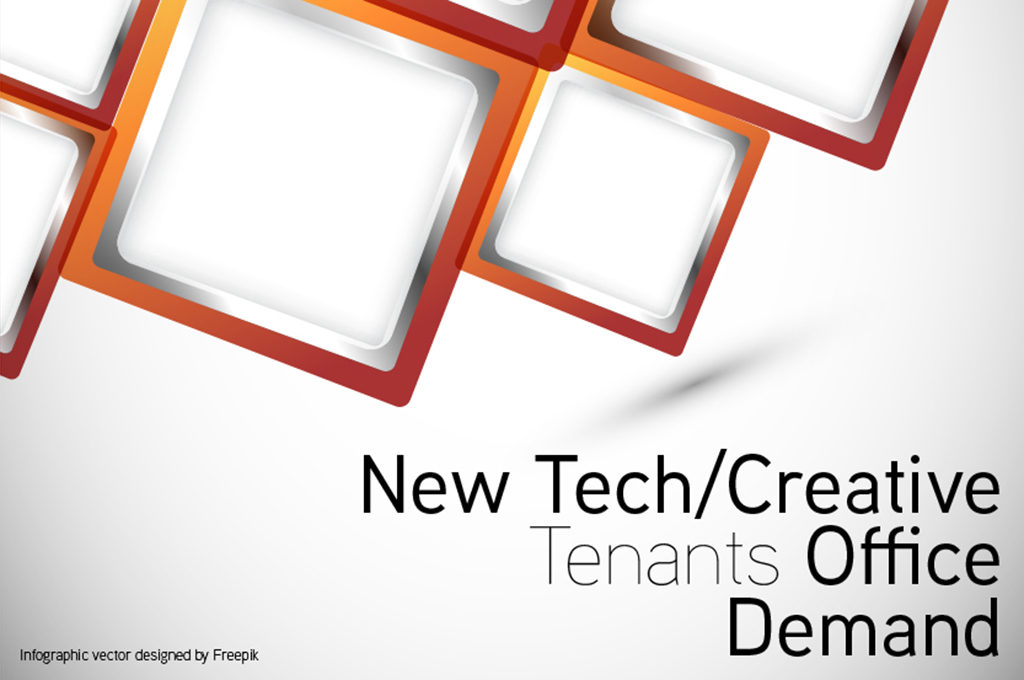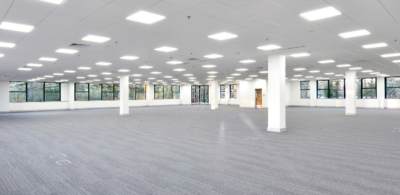You already know about the unprecedented impact the biggest tech companies in the world have had. You use their products countless times every day because they’ve made it their business to be indispensable. Three of the top 10 largest companies in the world by market capitalization did not exist 23 years ago. The oldest, Amazon, was incorporated in 1994. It currently ranks 6th on the list. Facebook arrived 10 years later and checks in at number five. And the world’s number-two company by market cap, Google (parent company Alphabet), appeared in 1998. Indeed, the new era of companies has been one of the most significant drivers of the feverish pace of net leasing activity, with many companies expanding their footprints not only within their existing home bases, but spreading out to secondary markets to take advantage of lower real estate costs and access to high-end talent.
Further underscoring just how quickly things can change in the modern tech landscape, a review of CB Insights’ Unicorn List, which tracks the current private companies with a valuation of $1 billion or higher, reveals the vast majority of the list’s 162 organizations as of this writing reached this echelon within the past three years—the longest-standing company on the ranking hit the $1 billion mark in 2009.
Read the latest report on The Impact of “New Tech” Tenants on U.S. Office Leasing
A New Era
The “new era” tech and creative companies—defined for our purposes as firms that have come online in the last 20 or so years, and have grown at substantial rates while subsequently expanding their office footprints—have affected arguably the two most significant components of the commercial real estate business today: the leasing of office space, and what that leased space looks like. Let’s look at the tech and creative companies that are overthrowing traditional drivers of leasing in the U.S., and how current workplace strategy trends—many of which are being driven by Tech/Creative—are influencing other sectors.
I have the privilege of being with Colliers where we have a strong presence in key metro areas witness to new era net absorption. At Colliers, we’ve evaluated these trends through the lens of five key cities. If you guessed San Francisco, San Jose/Silicon Valley and Seattle, you obviously wouldn’t be wrong. But you might be surprised at just how much the new creative class has upended cities like Boston and New York, which have historically relied on more traditional industries as their office leasing stalwarts.
Trends Across the United States
The most powerful tech companies in the world couldn’t have programmed a better outcome for commercial real estate in 2015. The year’s 86.7 million square feet of absorption was the highest total in a decade, while vacancy declined 70 basis points from the end of 2014 to 12.5 percent. The last time the vacancy rate was that low was during the halcyon days of late 2007, when Uber was just a gleam in founder Travis Kalanick’s eye, and Dropbox was in diapers. Even with a very slight — 10-basis-point — increase in the first quarter of 2016, the national office vacancy rate is still at its lowest level since 2008. New era tech/creative firms are making their presence felt. For example, Saleforce.com—a cloud-based CRM software company that could be considered an elderly statesman of new tech given its 1999 founding — recently inked a deal for 300,000 square feet at 1095 Avenue of the Americas, to be renamed Salesforce Tower New York. With its neon logo replacing that of longstanding MetLife, so too will the skyline surrounding Bryant Park now reflect the new tech office era. Other eye-opening occurrences that happened in 2015 were Amazon expanding its Seattle footprint to 11 million square feet—larger than the entire 8.3 million-square feet inventory of San Jose/Silicon Valley—and Facebook adding an additional 275,000 square feet of its own.
“If you look at this cycle, virtually all of the net absorption of office space in the country has been through the activity of firms strongly associated with millennials, such as those focused on creative or high-tech,” according to Owen Thomas, CEO of Boston Properties, as quoted in GlobeSt.com.
Who’s Choosing The ‘Workplace of Choice’?
Meanwhile, companies who occupants tend to be largely tech and creative have continued to refine and redefine new standards by way of providing employees office space regardless of where they are located, and what the layouts of those offices look like. The latest in workplace-strategy jargon is the ‘workplace of choice,’ which allows employees to choose how they want to work on a particular day. Choices range from a place to have privacy to a space for collaboration to breakout rooms. It’s part of the social experience; choice of social environment for working goes back to interaction. The idea is to maximize productivity and also to address how people work today.
WeWork—currently 7th on the Unicorn List, with a valuation of $16 billion (technically a decacorn, and one of only 14 with the $10 billion-plus designation)—actually outranks Google (Alphabet) as the company with the most new leasing activity since the beginning of 2014 per CoStar, racking up 3.55 million square feet of space. Regus holds strong in third, with 2.08 million square feet. At this point, it probably won’t come as a surprise that two of the remaining five spots on the list belong to new era tech/creative company—Amazon, with sprawling deals of 1.36 million square feet and another for 1.25 million square feet. While many are familiar with the abundant amenities and over-the-top employee-friendly campuses of the world’s biggest tech companies, the collaborative and flexible dynamic championed by the Googles, Facebooks, WeWorks and Reguses of the world has trickled down to numerous organizations that historically may have never considered a radical rethink of their office environs. Examples include multiple break rooms, top tier food service, lounge and exercise rooms, dog parks, bike stations, massages, yoga classes, even bowling alleys. Nixon Peabody, a Global 100 law firm and industry titan, decided to do away with corner offices and renovated its Washington, D.C. office to an open-office floorplan where all offices are the same size and the few walls still erected are transparent. While likely less influenced by Silicon Valley aesthetics and geared more toward good old fashioned cost savings, the General Services Administration has worked toward consolidating the Department of Homeland Security’s headquarters in D.C., into an open floor-plan setting that would shrink square footage per person and reduce real estate costs by hundreds of millions. Even the Southeast Michigan Council of Governments in Detroit pared its office space down by more than 20 percent, enjoying an office that promotes natural light and increased face-to-face engagements.
Also: Read Part Two: New York| Part Three: Boston | Part Four: Seattle | Part Five: San Francisco | Part Six: San Jose and Silicon Valley
As president of National Office Services for Colliers, Cynthia Foster leads our national office platform across multiple service lines, including capital markets, tenant representation, leasing agency, property management and valuation.

 Colliers Insights Team
Colliers Insights Team

 Aaron Jodka
Aaron Jodka
 Amber Merrigan
Amber Merrigan
 Andrew Steele
Andrew Steele